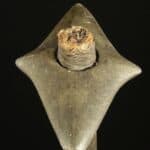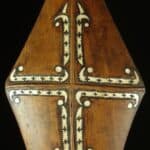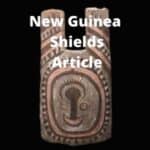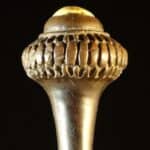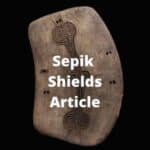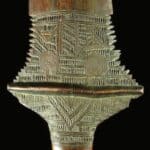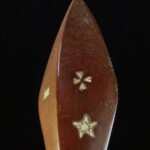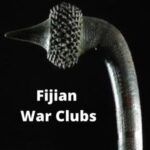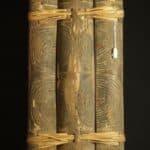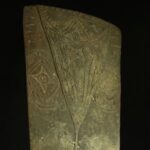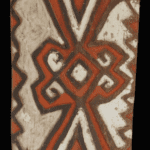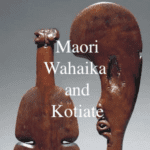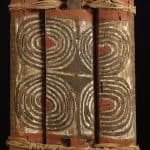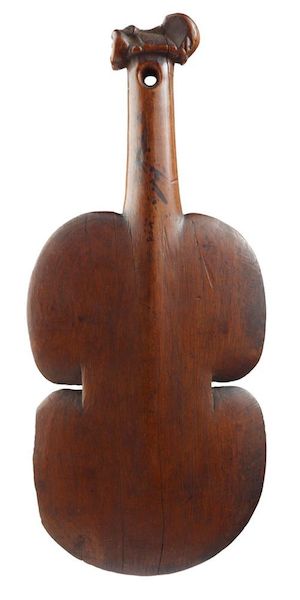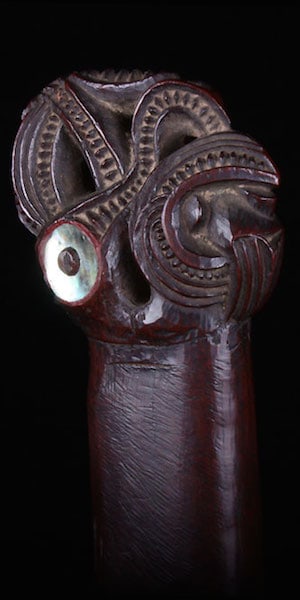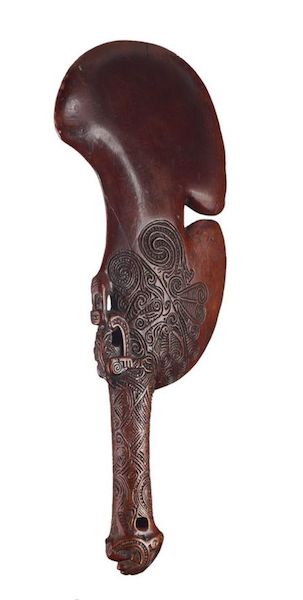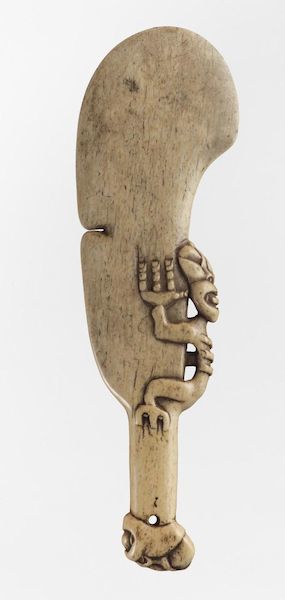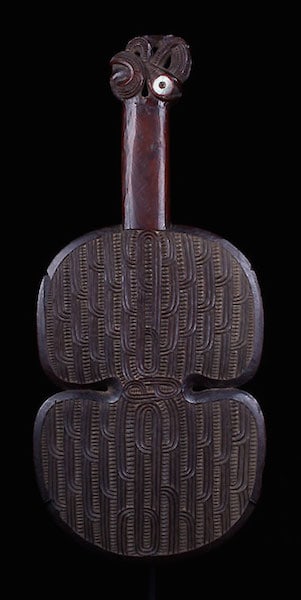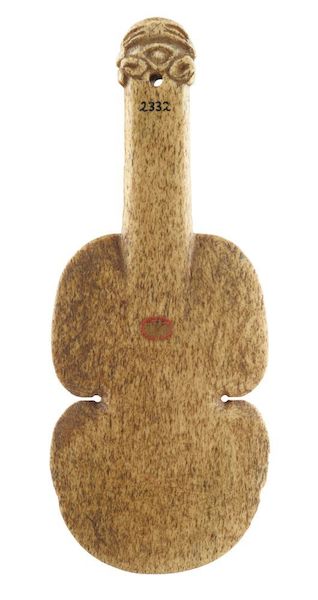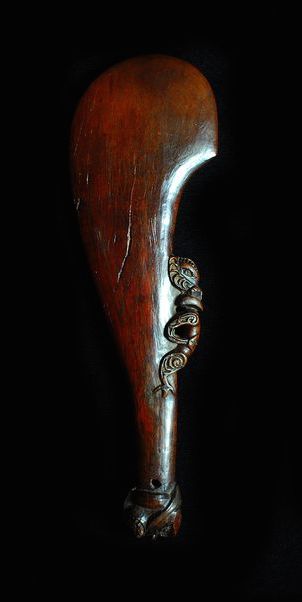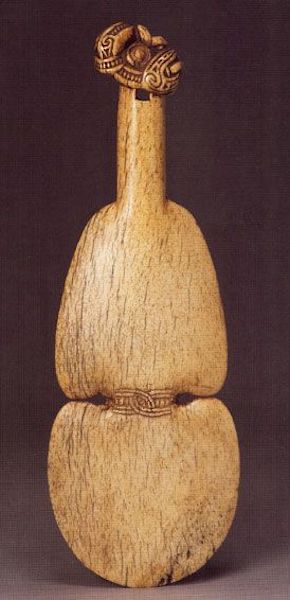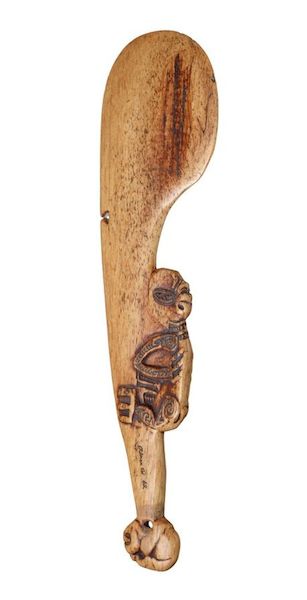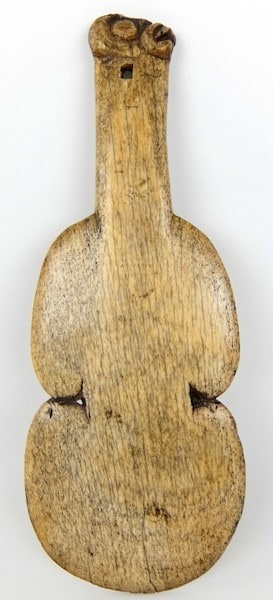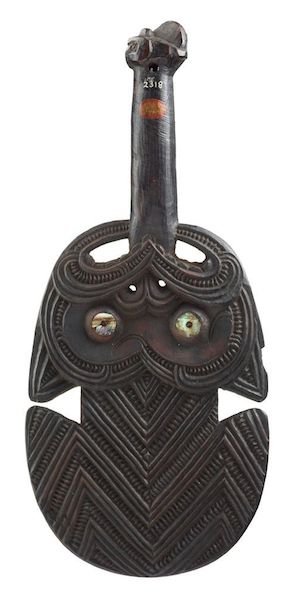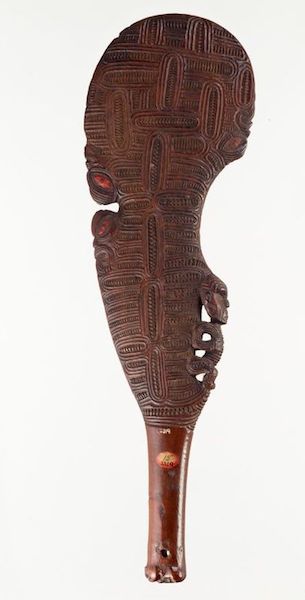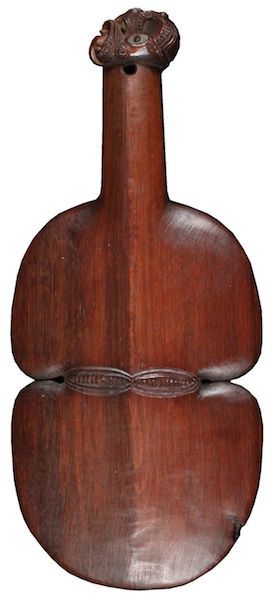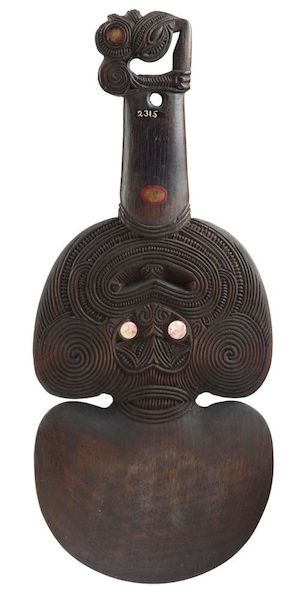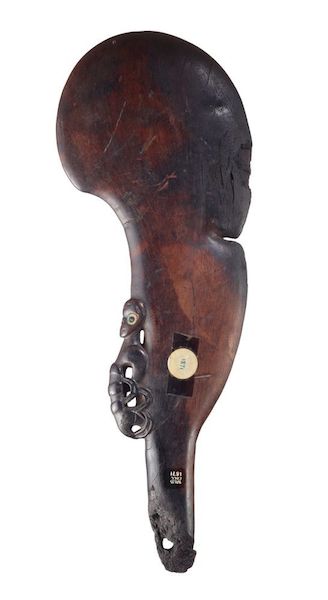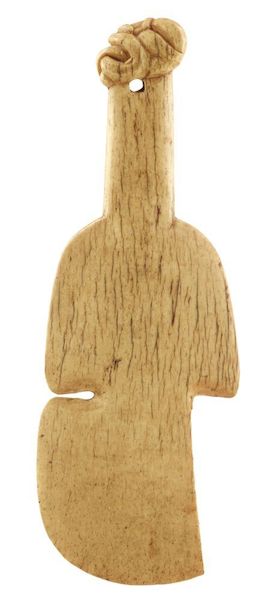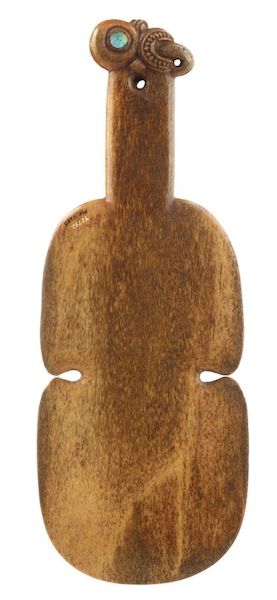Wahaika and Kotiate Maori Short Clubs
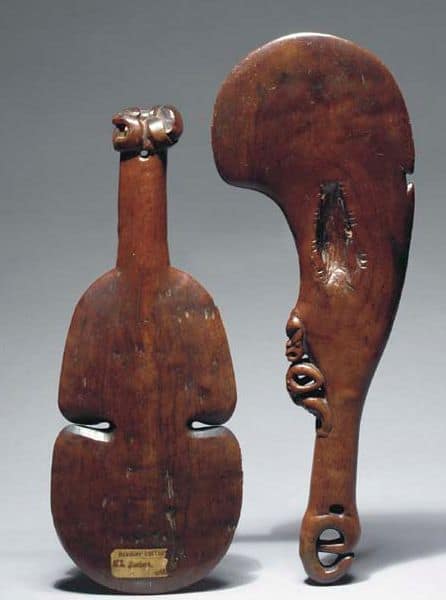
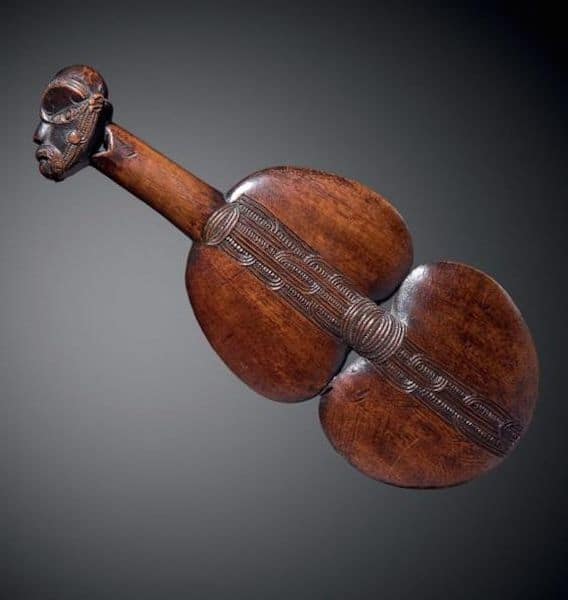
Made for sale or not this club is still collectable
Wahaika and Kotiate general information
The wood in contemporary versions of Maori Wahaika and Maori Kotiate tend to be from lighter timbers. The antique pieces made for smashing into people were from the hardest woods available or from whalebone. Early examples of Maori Wahaika and Maori Kotiate art are less flamboyant than newer versions. They tend not to have extensive surface decoration but rather have a beauty that comes from their form. Some old early examples made for sale to travelers still have some value. The butt terminal of wahaika and kotiate usually terminate in a mask and have a suspension hole for wrist thongs. In earlier ones this hole is square or triangular and cut through from each side. In later ones, the hole is round, drilled through from one side with European drill bits. Early examples made for sale still have collectible value due to the superb workmanship.
Wahaika
These wood hand clubs (Wahaika) as well as whalebone Wahaika, all have sinuses about halfway down the blade. These sinuses functioned as feather attachments as in the Kotiate. The recumbent Figure, situated forward of the handle, is useful in separating 18th-century examples from19th-century styles. In the typical 19th century examples, these figures carved in high relief, are large and often filigreed. In the 18th century examples, these figures are usually either absent or carved in low relief without filigree. Figures are much smaller in size, hardly extending above the form line. Several Wahaika exist today collected by Captainn James Cook. It is of particular interest that none of the known 18th century Wahaika have sinuses cut into their blades. Apparently, Wahaika without sinuses are older in style.
18th C Example
The most collectable
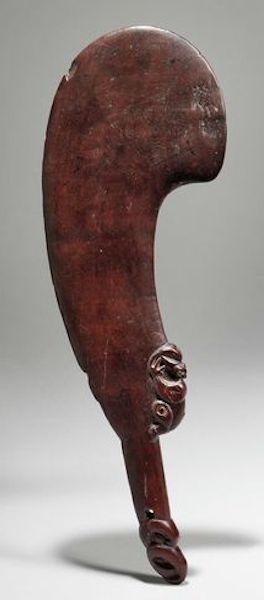
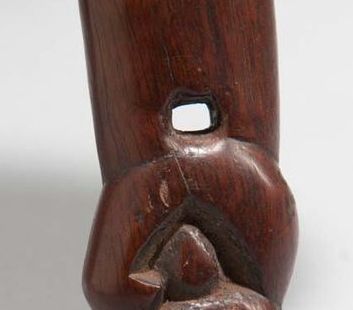
Square Hole for wrist strap
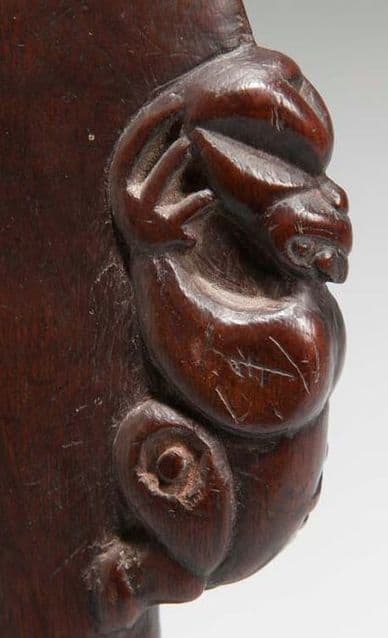
Figure lacks filigree
19th c example
Made for warfare
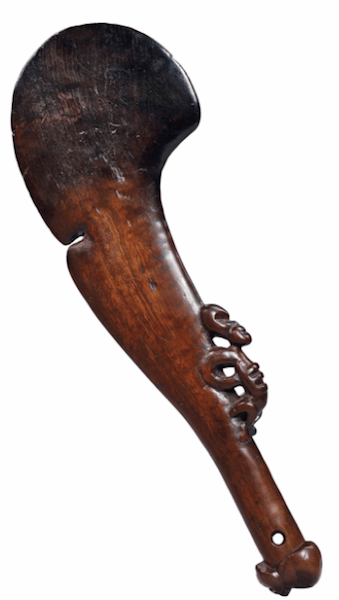
Larger Figure
Round Hole
Sinus
19th C example
Made for sale
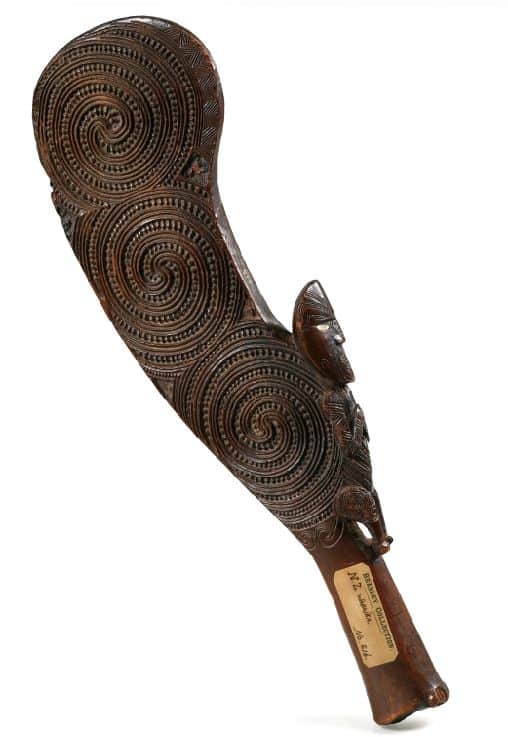
Figure to large
To Much filigree
no hole
20th C example
Made for sale
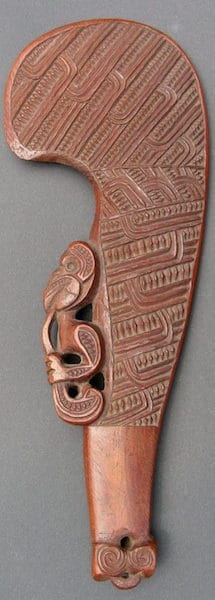
Light wood
Large figure with filigree
Circular drill hole
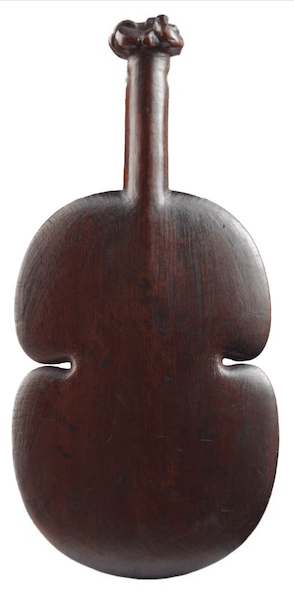
Great 18th C example and highly collectible.
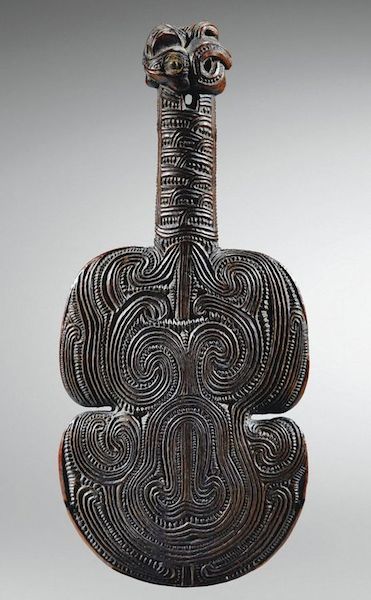
Later example made to sell but still collectible due to superb workmanship.
Kotiate
The feature distinguishing Kotiate from other bilaterally symmetrical hand clubs is the depressed sinus. The sinus is halfway down each edge of the blade. These sinuses were to attach feather bundles, which served in fighting to distract the adversary. Kotiate usually have masks as handle terminals just in front of which is a hole for the wrist thong, Tau.
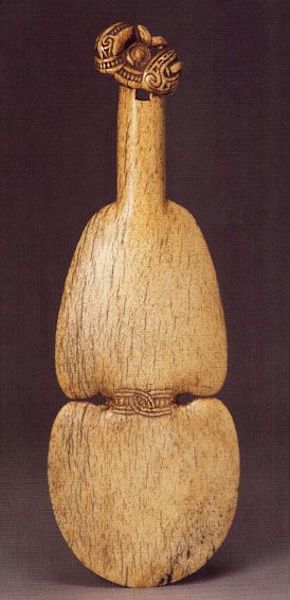
Maori Whalebone Clubs
Whalebone is cut from the pan section located behind the teeth of the lower jaw of the sperm whale. This bone unlike other parts of the skeleton is extremely strong and dense. Weapons made from it are sturdier than those of similar style made from wood. Prior to the south pacific whaling fishery in the 1820’s – 1860’s whalebone clubs would have been quite rare. However, during the height of the whaling activity, Jaws “pans” were widely traded with the Maori. The use of whalebone in Maori weapons became considerably more widespread.
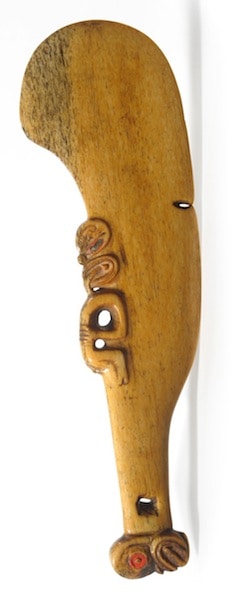
Wahaika and Kotiate
If you are planning to add a Kotiate or Wahaika to your Maori Art collection or Polynesian Art collection be aware they are not cheap. If you are after a Maori club and are not fussy about what type then a Patu would be a better alternative. Unlike other forms of Maori art, the more intensely carved pieces are not necessarily more collectible. Like most Polynesian art the older the better. If you are after a decorative piece of Maori Art, then a Maori feather box is better value for money. If you enjoyed this article you could also read Polynesian war clubs Aboriginal weapons or Solomon Island War clubs
All images in this article are for educational purposes only.
This site may contain copyrighted material the use of which was not specified by the copyright owner.
Weapon and Weapons Articles


